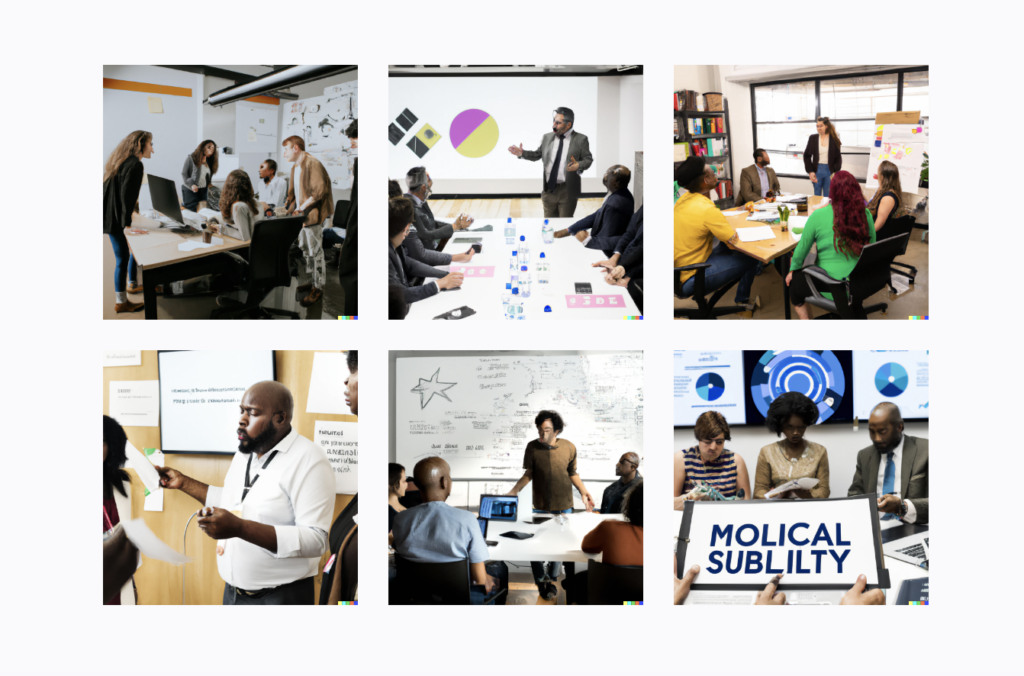PAI Seeks Public Comment on the Synthetic Media Code of Conduct
Perhaps more than any year before, 2022 has demonstrated the vast range of possibilities for synthetic media. In March, a manipulated video of Ukrainian President Zelensky supposedly encouraging surrender to Russia began circulating online. Less than a month later, social media became awash in (mostly) artistic and playful images generated by DALL·E, OpenAI’s A.I. tool for generating images from natural language. Synthetic media can allow for creative expression, but it could also alter the course of an armed conflict. Today, there are more techniques than ever for generating synthetic media — only increasing the impact it can have on society.

The Partnership on AI (PAI) launched its Synthetic Media Code of Conduct project in March 2022 in order to provide better guidance on how to ensure this dual-use technology is not used maliciously. The PAI Synthetic Media Code of Conduct is a suite of guidelines on how to ethically and responsibly develop, create, and share synthetic media. This Code is a natural extension of PAI’s AI & Media Integrity Program, which has been exploring the harms and opportunities from synthetic media with Partners across disciplines, sectors, and nations.
Now, we want to hear from you. We’re sharing the latest version of the Code and seeking public comment through the form here throughout the summer of 2022. This feedback will inform edits to the final Code which PAI will launch in early 2023.
To workshop the Code and shape it into the version we’re sharing today, PAI has hosted seven convenings and more than 25 individual stakeholder sessions. This includes talking to institutions like technology platforms, media organizations, human rights organizations, academic institutions, and synthetic media startups. We’ve also worked with diverse individuals, including policy professionals, media forensics researchers, affected stakeholders, journalists, ethicists, creatives, and academics.
We’re seeking public input to help us further refine the Code, creating a document that both responds to the current state of synthetic media and can also be applied to novel use-cases as technology evolves. Through this process and further convenings, we hope to answer some of the following outstanding questions:
- What mechanism for or examples of synthetic media harm are missing from the Code? What mechanisms or examples are superfluous?
- How do we structure resourcing and access to transparency tools in a scalable way, particularly for smaller stakeholders?
- How can the Code be more concrete?
- Should this Code apply to children?
- What level of disclosure, either direct (like labels) or indirect (like traceable elements in data), is adequate for different types of synthetic media?
- What approaches to disclosure can be meaningfully applied to open-source projects?
- How should we think about consent as it relates to synthetic media?
This document will not exist in a vacuum — the Code will serve as a complement to much of the policy activity implicating synthetic media today, such as the EU’s Code of Practice on Disinformation and AI Act and the Deepfake Task Force Act in the US. Setting norms alongside formal, regional policymaking allows us to create more globally sensitive guidelines for synthetic media, ones that are informed by evidence-based research and participatory consultation with key stakeholders (including the public). Institutional commitment to these principles will also ensure that those working in synthetic media have both a space to articulate their good-faith aspirations and a community to grapple through tricky edge cases with. Ultimately, we hope it sets up a robust foundation for ethical practices in synthetic media moving forward.
We’re excited to launch the Synthetic Media Code of Conduct in the later half of 2022 with several key Partners from across technology, media, and civil society. Alongside the Code itself, we plan to share a series of vignettes (which we are also seeking input on) that allow us to apply it in practice to real-world case examples. We plan to develop programming and reporting on the Code and the synthetic media field in the coming year as well.
In the last few months alone, the state of play in synthetic media has evolved rapidly, with new technology and use-cases emerging. At the same time, our Code has also evolved.
We now invite you to participate in this progress.
We look forward to reading your input on the Code through this form.


